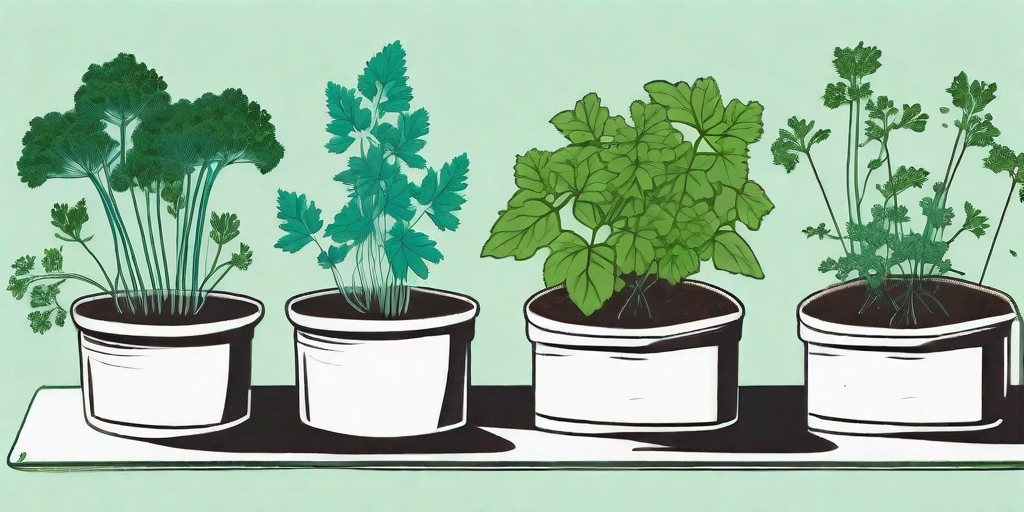
There's an old saying that goes, "A garden is a friend you can visit anytime." But what if that friend could also spice up your culinary life? Enter the humble parsley, a green, leafy confidante that's ready to add a burst of flavor to your dishes. If you've ever dreamed of having your own herb garden, this is the perfect place to start. And don't worry, you don't need a green thumb, just a little patience, and a dash of humor.
The Basics of Parsley Propagation
Before we dive into the nitty-gritty of parsley propagation, let's get a few basics out of the way. Parsley is a biennial plant, which means it has a two-year life cycle. The first year is all about growth, while the second year is when it flowers and sets seeds. But don't worry, we're not going to make you wait two years to enjoy your parsley. We're all about instant gratification here!
There are two main types of parsley: curly leaf and flat leaf. Curly leaf parsley is often used as a garnish, while flat leaf parsley has a stronger flavor and is preferred in cooking. Choose the one that tickles your fancy, or be a rebel and grow both. Who's stopping you?
Choosing the Right Soil
Like a diva, parsley is a bit picky about its living conditions. It prefers well-drained soil with a pH between 6.0 and 7.0. If you're not sure about your soil's pH, you can buy a soil test kit from your local garden center. If your soil is too acidic, add some lime. If it's too alkaline, add some sulfur. It's like a science experiment, but with less chance of an explosion.
Make sure to enrich your soil with compost or a slow-release fertilizer before planting. This will give your parsley the nutrients it needs to grow big and strong. Think of it as feeding your plant a hearty breakfast before a big day.
Planting Your Seeds
Now comes the fun part: planting your seeds. Parsley seeds can be a bit stubborn, so it's a good idea to soak them in warm water for 24 hours before planting. This will soften the seed coat and make it easier for the seedling to break through. It's like giving your seeds a spa day before their big debut.
Plant your seeds about 1/4 inch deep and 6 inches apart. Cover them lightly with soil and water well. Keep the soil moist but not waterlogged. Remember, parsley likes to be pampered, not drowned.
How to Care for Your Parsley
Congratulations, you've planted your parsley seeds! Now comes the hard part: waiting. Parsley seeds can take up to three weeks to germinate, so don't panic if you don't see any action right away. Just keep the soil moist and be patient. Your parsley is just taking its sweet time to make sure it looks its best for you.
Once your parsley plants are about 6 inches tall, you can start harvesting. Simply cut off the outer leaves at the base of the plant. This will encourage new growth and keep your parsley producing all season long. Just remember, moderation is key. Don't get too scissor-happy or you might stress your plant out.
Dealing with Pests
Like any popular plant, parsley has its share of admirers. And by admirers, we mean pests. Aphids, leaf miners, and parsley worms can all pose a threat to your precious parsley. But don't worry, we've got some tricks up our sleeve to keep these pests at bay.
Introducing beneficial insects like ladybugs and lacewings can help control aphids. These insects are natural predators of aphids and can keep their population in check. As for leaf miners, removing affected leaves and keeping the area clean can help prevent an infestation. And if you see any parsley worms, simply pick them off and relocate them. They might be pests, but they're also future butterflies, so let's show them some kindness.
FAQs
Why is my parsley turning yellow?
Yellowing leaves can be a sign of overwatering. Remember, parsley likes its soil to be moist, not waterlogged. If your parsley is turning yellow, try cutting back on watering and make sure your soil is well-draining.
Can I grow parsley indoors?
Absolutely! Parsley is a great plant to grow indoors. Just make sure it gets at least six hours of sunlight a day and is planted in a pot with good drainage.
How often should I harvest parsley?
You can start harvesting parsley when the plants are about 6 inches tall. Harvest regularly to encourage new growth, but remember, moderation is key. Don't harvest more than one-third of the plant at a time.
Conclusion
And there you have it, folks! Everything you need to know to propagate parsley like a pro. Remember, gardening is a journey, not a destination. So take your time, enjoy the process, and don't forget to laugh at your mistakes. After all, the best gardeners are the ones who know how to grow with their plants.
So go ahead, roll up your sleeves, get your hands dirty, and start growing your own herb garden. Your kitchen (and your taste buds) will thank you!











